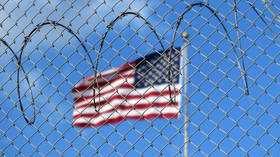Hurricane Katrina levee rebuild completed

The US Army Corps of Engineers has finally finished rebuilding the system of levees, floodgates, and other protections surrounding the city of New Orleans. Stronger and more extensive than the structures it replaced, the flood-prevention system is the “largest civil works project in the Corps’ history,” Louisiana Governor John Bel Edwards announced on Friday during a ribbon-cutting ceremony.
“The people of New Orleans have experienced the worst Mother Nature has to offer, and with the completion of this system, they’ll be protected by the best of engineering, design, and hurricane protection,” the governor declared. The official completion of the project comes just in time for hurricane season, which begins in June.
The new flood protection system includes the largest-ever pumping station and storm surge barrier. The latter stretches 1.8 miles (2.8 km) and can be closed during a storm surge. The levees have been armored to stop erosion, and permanent canal closures and pumps were added. Congress supplied $14.5 billion for the project, the formal name of which is the Hurricane and Storm Damage Risk Reduction System.
Already partly in operation, the system thus far appears to work, judging by its success withstanding last year’s season, the third-most active Atlantic hurricane season ever recorded. The year saw the standard alphabetical list of storm names exhausted and one of the worst storms in Louisiana’s history unleashed. Hurricane Ida, a Category-4 storm that hit in August – 16 years to the day after Katrina laid waste to New Orleans – tied historical records as the strongest hurricane ever to hit Louisiana.
Katrina was the costliest storm in American history, wreaking $178.8 billion in damages (in 2021 dollars) when it struck the Gulf Coast in 2005. More than 1,800 people died due to the storm and its aftermath. Nearly half of the fatalities were due to drowning as no fewer than 50 of the levees that were supposed to protect New Orleans failed. Many others succumbed to chronic disease exacerbated by the stress and conditions of post-Katrina living. The vast majority of the storm-linked deaths (1,577) took place in Louisiana, while there were 238 in Mississippi, and several in Alabama, Florida, and Georgia.
Nearly three quarters of all occupied housing in New Orleans was damaged in the storm, leading more than half of the population to flee the city, at least temporarily, while their homes were being rebuilt. While a mandatory evacuation was issued ahead of Katrina’s landfall, many residents – especially the poor and elderly who had nowhere to go – opted to stay instead, sheltering in their homes or in the Superdome sports arena, which soon turned into an overcrowded, poorly-planned deathtrap. Ultimately, some 400,000 people were permanently displaced by Katrina, and the city’s population numbers have never recovered.












